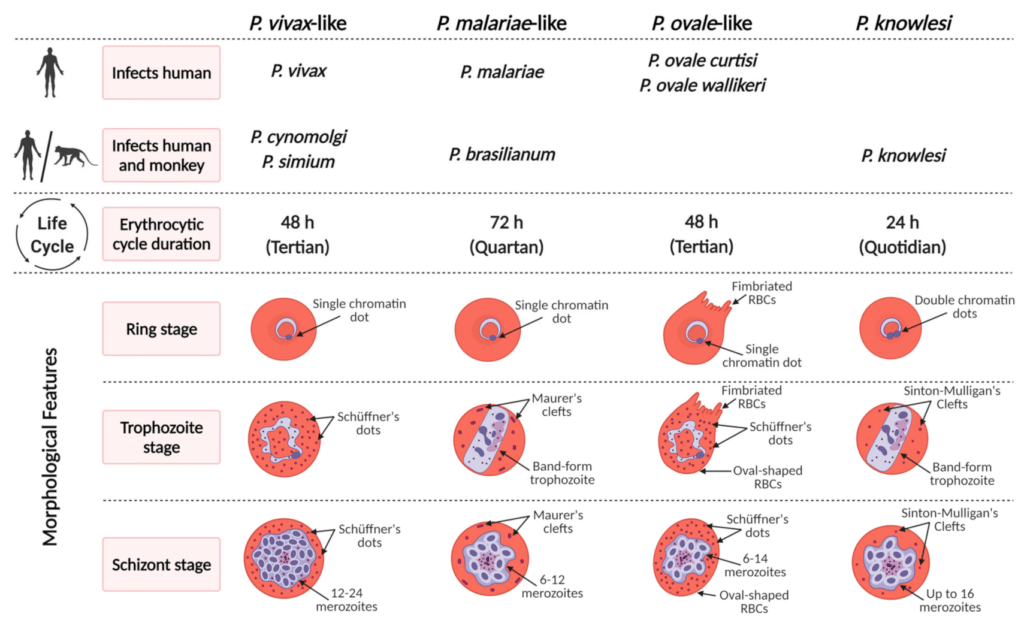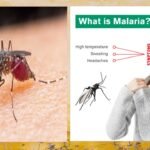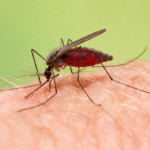Introduction
Malaria is a life-threatening disease that affects millions of people worldwide every year. Caused by Plasmodium parasites and transmitted through the bite of infected female Anopheles mosquitoes, malaria continues to be a major global health concern, particularly in tropical and subtropical regions. Recognizing the symptoms of malaria early can save lives, reduce complications, and prevent further transmission. This comprehensive blog will explore in depth the various symptoms of malaria, the types of malaria parasites and how each type affects the body, and the importance of early diagnosis and treatment.
1. What is Malaria?
Malaria is a parasitic infection that affects red blood cells. It is most common in tropical and subtropical areas including sub-Saharan Africa, South Asia, and parts of South America. There are five known Plasmodium species that cause malaria in humans:
- Plasmodium falciparum
- Plasmodium vivax
- Plasmodium malariae
- Plasmodium ovale
- Plasmodium knowlesi
Of these, P. falciparum is the most dangerous, often leading to severe malaria or death if not treated promptly.
2. How Malaria Spreads
Malaria is transmitted through the bite of an infected female Anopheles mosquito. When the mosquito bites a person, it injects malaria parasites into the bloodstream. The parasites travel to the liver, where they multiply before entering the bloodstream and infecting red blood cells. Once the parasites mature, they rupture the red blood cells, causing symptoms such as fever, chills, and anemia.

*****************************************************************************************************
3. Types of Malaria Parasites
Different Plasmodium species cause different symptoms and severity levels of malaria:
a. Plasmodium falciparum
- Most severe form
- Common in Africa
- Can cause cerebral malaria and multiple organ failure
b. Plasmodium vivax
- Common in Asia and Latin America
- Can remain dormant in the liver and relapse later
c. Plasmodium ovale
- Less common
- Can also cause relapses
d. Plasmodium malariae
- Causes long-lasting chronic infection
- Less severe symptoms
e. Plasmodium knowlesi
- Rare but can cause severe symptoms
- More common in Southeast Asia
Each type presents unique symptoms, but many signs overlap.

****************************************************************************************************
4. General Symptoms of Malaria
Most malaria symptoms appear within 10–15 days of the mosquito bite. However, in some types like P. vivax and P. ovale, symptoms may appear weeks or
months later due to parasite dormancy.
Common symptoms include:
- Fever – Sudden high-grade fever is the most common symptom.
- Chills and shivering – Often precedes fever, with intense cold.
- Headache – Persistent, sometimes severe.
- Sweating – After the fever peaks, heavy sweating follows.
- Fatigue – Due to red blood cell destruction.
- Muscle aches and body pain
- Nausea and vomiting
- Abdominal pain
- Loss of appetite
- Mild jaundice (yellowing of eyes and skin)
5. Symptoms by Malaria Type
a. Plasmodium falciparum
- High fever
- Severe headache
- Confusion or seizures
- Respiratory distress
- Anemia
- Kidney failure
- Cerebral malaria (coma or unconsciousness)
b. Plasmodium vivax and ovale
- Recurring fever (every 48 hours)
- Splenomegaly (enlarged spleen)
- Moderate anemia
- Relapses due to dormant liver stage
c. Plasmodium malariae
- Fever every 72 hours
- Milder symptoms
- Long-lasting low-grade infection
d. Plasmodium knowlesi
- Rapid onset of symptoms
- Fever spikes every 24 hours
- May cause severe complications
6. Early-Stage Symptoms
In the early stages, symptoms may mimic flu or viral infections. These include:
- Mild fever
- Weakness
- General malaise
- Loss of appetite
- Slight chills
- Dizziness
Because of these non-specific symptoms, malaria can often go undiagnosed without testing.
7. Severe Malaria Symptoms
When malaria becomes severe (especially with P. falciparum), it can result in serious complications.
Warning signs of severe malaria:
- Cerebral malaria – confusion, seizures, unconsciousness
- Severe anemia – due to rapid destruction of red blood cells
- Difficulty breathing – a sign of respiratory distress
- Jaundice – indicating liver failure
- Dark or cola-colored urine – due to hemoglobinuria
- Low blood pressure – shock
- Multi-organ failure
Severe malaria is a medical emergency and requires immediate hospitalization.
8. Malaria Symptoms in Different Age Groups
a. Children
- High fever
- Seizures
- Vomiting
- Loss of appetite
- Drowsiness or irritability
- May progress quickly to severe illness
b. Pregnant Women
- Increased risk of miscarriage
- Low birth weight
- Severe anemia
- Placental malaria (infection of the placenta)
c. Elderly
- Weaker immune response
- Higher risk of complications
- Chronic fatigue and prolonged recovery

9. Differences Between Malaria and Other Diseases
Malaria can be mistaken for other conditions. Here’s how it differs:
| Disease | Key Differences from Malaria |
|---|---|
| Typhoid | Gradual onset of fever, abdominal symptoms more prominent |
| Dengue | Severe body pain, rash, low platelet count |
| Flu | Respiratory symptoms more dominant |
| COVID-19 | Dry cough, loss of taste/smell, breathing difficulty |
| Viral Fever | Short duration, no relapse pattern |
Blood tests are essential to differentiate malaria from similar conditions.
10. Diagnosis and Importance of Symptom Recognition
Timely recognition of symptoms is vital. Diagnostic methods include:
- Rapid Diagnostic Tests (RDTs) – Quick and easy to use
- Microscopic examination – Blood smear test to see parasites
- PCR (Polymerase Chain Reaction) – Highly accurate, used in labs
Self-medication without testing can be dangerous. Always consult a doctor if malaria is suspected.
11. When to Seek Immediate Medical Attention
Seek urgent medical help if you notice:
- High fever with chills
- Seizures or altered consciousness
- Trouble breathing
- Persistent vomiting
- Dark-colored urine
- Signs of dehydration or shock
Delaying treatment can lead to complications or even death, especially in vulnerable individuals.
12. Conclusion
Malaria continues to be a deadly disease in many parts of the world, but with awareness, timely diagnosis, and proper treatment, it is entirely curable. Recognizing the symptoms early is the first and most critical step in breaking the cycle of infection and preventing fatalities. Whether it’s a mild fever or a full-blown seizure, understanding malaria symptoms empowers individuals and families to take the right steps at the right time. Always consult a healthcare provider if you suspect malaria, especially if you’ve been in a malaria-endemic area.
Symptoms of Malaria Symptoms of Malaria Symptoms of Malaria Symptoms of Malaria Symptoms of Malaria Symptoms of Malaria Symptoms of Malaria Symptoms of Malaria
*****************************************************************************************************
https://www.ganeshdiagnostic.com/blog/what-are-the-4-types-of-malaria
https://pram123.com/what-is-healthcare-definition-types-importance-and-future-trends/
*****************************************************************************************************











